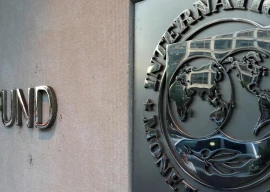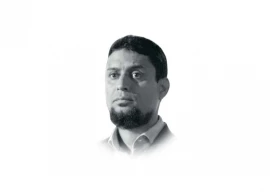
Conspiracy theories are usually triggered after the onset of certain big worldwide events such as the Covid-19 pandemic or conflicts such as the ones in Ukraine or Gaza. As information from such catastrophes propagates through the social media platforms, there are infinite ways by which the incoming content can be stitched together to generate broadcasts that suit different audiences.
However, in a typical case of a conspiracy theory, the data is amalgamated in such a way that it supposedly reveals a secret plan that is designed and executed by influential entities to meet their narrow self-interest. Remarkably, some of these fallacies tend to gain wide level of circulation especially if their formation is influenced by events that are genuinely real. However, in such circumstances, their main error is due to the erroneous connection of the dots despite the individual dots being factually accurate.
Hence, it is usually not easy to determine if a fabricated plot deserves our trust just because it may have gone viral. Nevertheless, to arrive at a meaningful decision, we can check to see if its key inferences were derived by following basic standards of data analysis. Often, in the case of many fictitious scandals, we observe that the quality of research is generally poor which leads us to question the integrity of their key findings. Since flawed analysis forms the foundation of conspiracy theories, we should discard any emergent ideas that exhibit any of the five common deficiencies as explained below.
The first type of failing is the tendency of conspiracy theories to be oversimplistic to ensure broad palatability. There is a famous quote by Einstein which states that everything should be made as simple as possible, but no simpler. At times oversimplification tends to be about using catchy taglines to exaggerate the impact of a single factor at the cost of alternative explanations. This is made possible by either illogically reducing all key drivers to the chosen one, or by undermining the importance of other possibilities through selective use of data. The latest example is a well reported soundbite by Vivek Ramaswamy, who was recently one of the Republican candidates for the US presidency, saying that January 6 mob attack on the US Capitol building was an ‘inside job’. This overemphasis on a simple cliched explanation that ignores all other counter evidence is a classic instance of a conspiracy theory in which information is utilised in a piecemeal manner as opposed to leveraging it holistically.
The second fault that we should look out for in conspiracy theories is that they frequently propose farfetched linkages between improbable factors. As a real-life example let us consider the start of the Covid period in the UK. Incidentally, it so happened that the coronavirus spread began during the same time when the groundwork was being laid out for the 5G mobile network. These two concurrent events led to a strong but wholly absurd rumour about the 5G mobile network being the root cause for the pandemic. Later, this bizarre gossip was eventually quashed but not before the vandalisation of the telecom infrastructure by many impacted groups. Therefore, the main point is that seemingly implausible connections should be accepted with great caution since a mere correlation between two data points could also be coincidental.
The third shortcoming that is usually found in several conspiracy theories is a common analysis error that assigns causal relationships to observations that might simply be related. For example, data from a particular beach resort may highlight that higher sale of ice cream occurs on days when the number of drownings is also high. Some analysts could make the mistake of linking drowning with the consumption of ice cream. We can imagine that this could further fuel all sorts of allegations regarding the ingredients in the ice cream triggering drowsiness and much more. However, a more plausible explanation is that during hot weather conditions, more people are drawn to the beach that results in larger sale of ice cream as well as higher incidents of drownings. Hence, in this instance, drowning and ice cream consumption are corelated but there is no causal relationship between them.
The fourth flaw that is often present in many conspiracy theories is that they are structured to validate our deepest fears and unconscious biases. This tends to occur when analysis of data leads to several valid but contradictory results. Under these circumstances, the selected and propagated conclusions are often the ones that match some of our preconceived notions. This is referred as confirmation bias which is amongst the many dozens of other cognitive biases that have been explained by the Nobel prize winning scientist Daniel Kahneman. Hence, to avoid falling into this trap, we should examine and discard any hypothetical narratives that have their foundations rooted in common people stereotypes.
The fifth failing is the use of dehumanisation which is the labelling of sinister attributes to entire groups of people. This is very troubling since individuals within communities are not considered distinct. Instead, they appear in unison to possess immoral characteristics that have been passed down to them as part of some grand hierarchical plan. On some occasions, the categorisation could also be positive in the sense that super-human skills are attributed to an entire body of people to muster up discriminatory theories about them. Hence, the key lesson here is to keep away from any theories that describe people in extremities, as if like a melodrama script with stock characters that are either totally heroical or wholly villainous.
Finally, a general word of caution regarding eco chambers that promote the generation of conspiracy theories from stories that reverberate on these nondiverse platforms. This is problematic since overreliance on a single source of information produces distorted conclusions. For truth to emerge from any investigation, many scientists recommend following the dialectical method which is believed to be originally founded by Socrates. The main aspect of this approach is that it makes it mandatory for researchers to analyse divergent set of inputs before drawing any major inferences. Therefore, any outcomes that are constructs of monotonous content should be regarded as untrustworthy despite having used flawless methods for analysis.
Published in The Express Tribune, February 6th, 2024.
Like Opinion & Editorial on Facebook, follow @ETOpEd on Twitter to receive all updates on all our daily pieces.































COMMENTS
Comments are moderated and generally will be posted if they are on-topic and not abusive.
For more information, please see our Comments FAQ